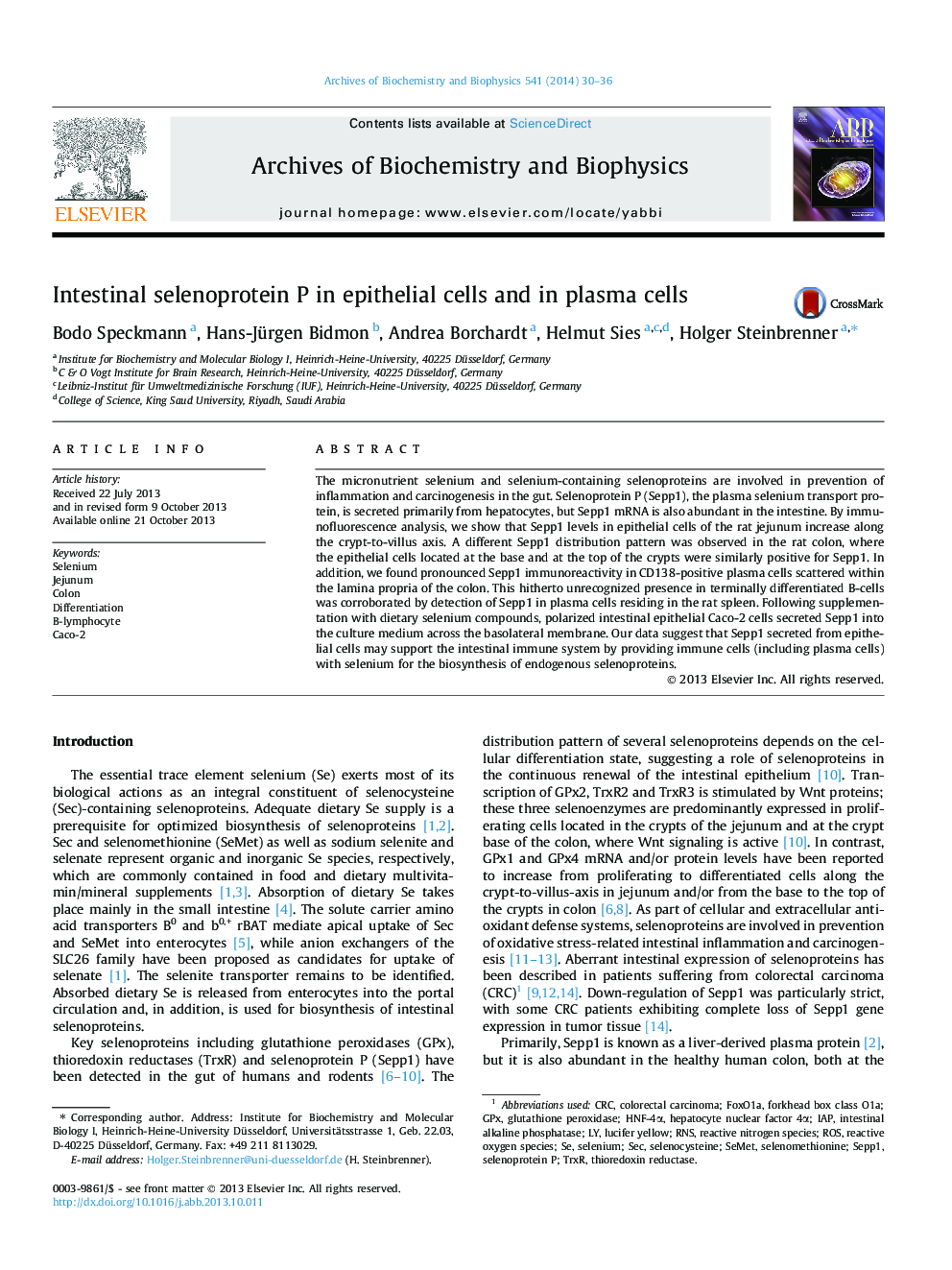| Article ID | Journal | Published Year | Pages | File Type |
|---|---|---|---|---|
| 1925282 | Archives of Biochemistry and Biophysics | 2014 | 7 Pages |
•Selenoprotein P immunoreactivity in rat jejunum increases along the crypt-to-villus axis.•Selenoprotein P is localized in epithelial cells and in plasma cells in the rat colon.•Plasma cells in the rat spleen are positive for selenoprotein P.•Polarized intestinal epithelial Caco-2 cells secrete selenoprotein P to their basolateral side.
The micronutrient selenium and selenium-containing selenoproteins are involved in prevention of inflammation and carcinogenesis in the gut. Selenoprotein P (Sepp1), the plasma selenium transport protein, is secreted primarily from hepatocytes, but Sepp1 mRNA is also abundant in the intestine. By immunofluorescence analysis, we show that Sepp1 levels in epithelial cells of the rat jejunum increase along the crypt-to-villus axis. A different Sepp1 distribution pattern was observed in the rat colon, where the epithelial cells located at the base and at the top of the crypts were similarly positive for Sepp1. In addition, we found pronounced Sepp1 immunoreactivity in CD138-positive plasma cells scattered within the lamina propria of the colon. This hitherto unrecognized presence in terminally differentiated B-cells was corroborated by detection of Sepp1 in plasma cells residing in the rat spleen. Following supplementation with dietary selenium compounds, polarized intestinal epithelial Caco-2 cells secreted Sepp1 into the culture medium across the basolateral membrane. Our data suggest that Sepp1 secreted from epithelial cells may support the intestinal immune system by providing immune cells (including plasma cells) with selenium for the biosynthesis of endogenous selenoproteins.
